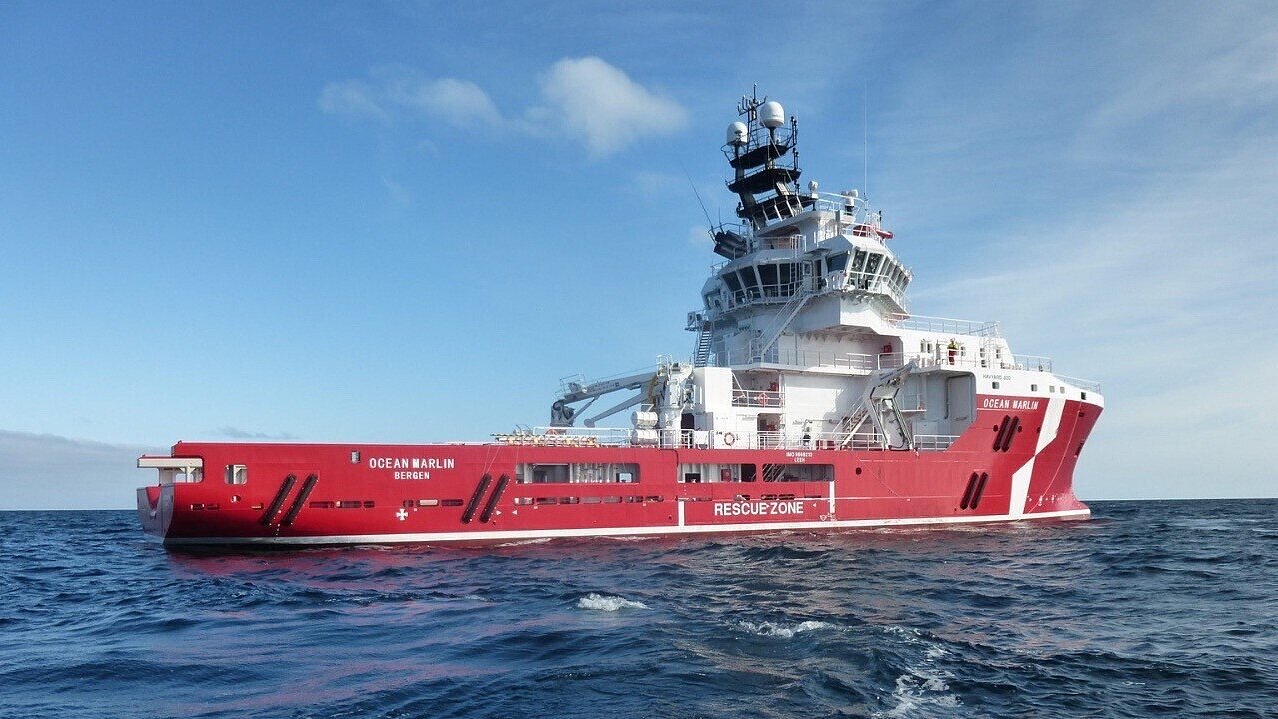
ERRV Ocean Marlin being converted into renewable energy support vessel in Northern Spain

The ERRV Ocean Marlin is currently in drydock in Vigo, Spain, being converted into a support vessel for the renewables energy sector (Source: Sulmara)
The Norwegian-owned ERRV (emergency response and rescue vessel) Ocean Marlin is currently in drydock at Northern Spain’s MetalShips & Docks being readied for her three-year charter to Glasgow-based subsea specialist Sulmara, for operations in the offshore renewable energy sector.
This is Sulmara’s biggest commitment yet to the renewable energy industry, chartering the ERRV from Norway’s Atlantic Offshore. Following the arrival of the 2,298gt 2014-built multi-purpose offshore support vessel in Vigo in February, work started on the installation of class-leading survey equipment, a subsea crane with active heave compensation, and the creation of extra accommodation.
Sulmara’s CEO Kevin McBarron said the decision to go down the unconventional, yet pragmatic route of repurposing an ERRV aligns with the Scottish company’s ambitions to deliver work for clients that has as little impact on the environment as possible.
He said: “Uncrewed surface vessels are not the answer to all of our clients’ needs and there is still a place for conventional ships. In partnering with Atlantic Offshore, we can bring a vessel that is as fuel efficient and environmentally friendly as possible to the market. We had opportunities to charter older, less efficient vessels, but for our first long-term charter vessel, that does not align with our company vision, and we wanted to make the right choice.”
Ocean Marlin has ample deck space for a range of mobilised equipment and accommodation for 28 Sulmara and client personnel. The vessel is likely to commence activities for her Scottish charterer at the end of the first quarter of 2024 and will initially operate on projects across Europe.
The multi-million GBP upgrade of Ocean Marlin includes the installation of both WROV (work-class remotely operated vehicles) and ObsROV (observation remotely operated vehicles) vehicles to complement a 34-ton capacity AHC crane and a full survey and positioning spread, as well as further engineering upgrades to support the deployment of a wide range of fixed and towed equipment.
